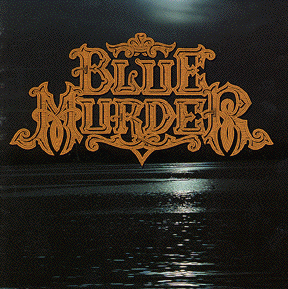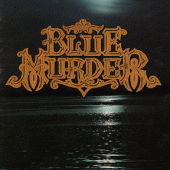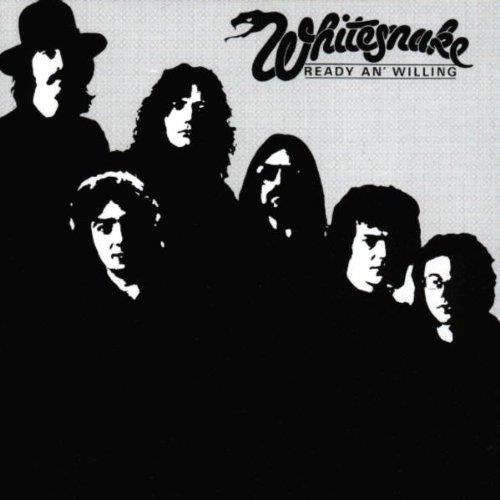
by John Kindred
Staff Writer
Classic Albums Revisited: Blue Murder
 John Sykes (Tygers of Pan Tang, Thin Lizzy, Whitesnake, Blue Murder, Sykes), the man behind the successful Whitesnake self-titled CD, which was an enormous international success, selling more than six million copies in the U.S. alone, never tasted the success of his accomplishment. David Coverdale fired the entire band that was involved in the recording process and replaced it with a new entourage of band members and took them out on tour in support of the album.
John Sykes (Tygers of Pan Tang, Thin Lizzy, Whitesnake, Blue Murder, Sykes), the man behind the successful Whitesnake self-titled CD, which was an enormous international success, selling more than six million copies in the U.S. alone, never tasted the success of his accomplishment. David Coverdale fired the entire band that was involved in the recording process and replaced it with a new entourage of band members and took them out on tour in support of the album.
On the heels of the success of the Whitesnake self-titled album, Sykes took the reins of his destiny in his hands. He returned home to England, where his mother and stepfather have a studio in Blackpool. After numerous jam sessions, Sykes made the demo for Blue Murder, which led him to signing with Geffen. Sykes formed the legendary band Blue Murder, featuring Carmon Appice (Vanilla Fudge, King Kobra) and Tony Franklin (The Firm, Whitesnake).
Sykes’ search for a vocalist led him to Ray Gillian (Badlands, Black Sabbath). The consensus from the band and those involved with Sykes was that no one they auditioned could match the guide vocals he had recorded on his demos. Sykes decided to scrap his search for a vocalist and handle the vocal duties himself.
The album that Sykes, Appice and Franklin recorded was nothing less than spectacular. Taking his guitar playing a step beyond his work with Whitesnake, Sykes produced edgy, fluid and explosive guitar rhythms. His solo work on the album is awe inspiring. No one can miss the legato phrasing and vibrato of John Sykes.
The surprise to us all was the voice. No one expected Sykes to be able to stand out as a lead vocalist. Citing Coverdale, Glenn Hughes and Phil Lynott as influences, Sykes found himself learning the trade from two of rock’s greatest vocalist. His thick British accent gives his vocals a smooth, sensual vibe. No longer standing in the shadow of Phil Lynott or David Coverdale, Sykes stood on his own as lead vocalist in his own right.
The fret-less bass playing of Tony Franklin highlighted the bass guitar as an instrument. Gone was the straight ahead playing of bassists of the genre to be replaced by fluid, rolling sounds that were unfamiliar to the listeners. The opening track is a prime example of the unique sound and style of Franklin.
With a resume that dates back to the late ‘60s, Appice set the foundation for heavy drumming. His unique style provided the back bone the music Blue Murder. His fills and rolls are bone crushing. Appice’s playing lays the foundation for Franklin’s bass grooves and Sykes’ guitar mastery.
The lyrical content of the CD bought forth images of swashbuckling, gypsies, pirates, high seas adventures, romantic interludes, pharaohs and the mystical hunt for treasure. The energy of the songs and overall sound carried the listener on a 52-minute journey of adventure, love and heroism.
Bottom Line: Every track rocks! It is such a shame that the current mainstream music industry feeds (those who listen to mainstream music) unoriginal, untalented and uninspired music. John Sykes deserves credit as a talented musician. His releases with Whitesnake, Blue Murder, Sykes, Thin Lizzy and Tygers of Pang more than show him to be in a class all his own.
Genre: Melodic Hard Rock
Produced By: Bob Rock
Running Time: 52:05
Release Date: 1989
Released: US
Website: John Sykes
Label: Geffen
Track Listing:
1. “Riot” – 6:22
2. “Sex Child” – 5:51
3. “Valley of the Kings” (Sykes, Tony Martin) – 7:51
4. “Jelly Roll” – 4:44
5. “Blue Murder” (Carmine Appice, Sykes, Tony Franklin) – 4:54
6. “Out of Love” – 6:44
7. “Billy” – 4:12
8. “Ptolemy” – 6:30
9. “Black-Hearted Woman” (Appice, Franklin, Sykes) – 4:48




Blue Murder’s debut album. The great John Sykes with one of the greatest bassists of all time, Tony Franklin and the legendary Carmine Appice recorded what is quite possibly one of the greatest debuts of all time.
A true hard rock classic.
Great review of one of the greatest hard rock albums of all time!
Could not agree more. The track “Jelly Roll” is in a class of its own.